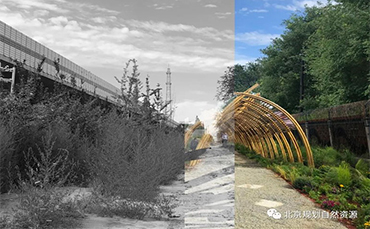


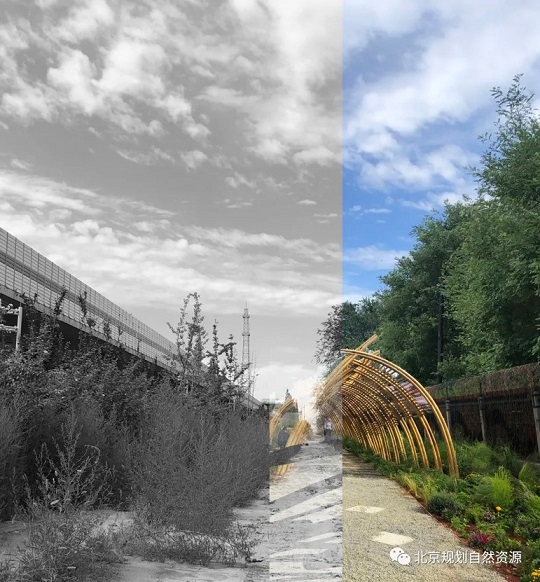
As a vital traffic line for the Beijing Winter Olympics, the Beijing-Zhangjiakou high-speed railway was completed and put into operation at the end of 2019. There are about 6 kilometers of railway passed through by underground tunnels in Haidian District of Beijing, and its original ground space can be renewed to be open space to the city, which becomes the Jing-Zhang Railway Heritage Park. The heritage park locates between Beijing North Railway Station and North Fifth Ring Road, with a total length of 9 kilometers. With the co-creation concept, the Beijing-Zhang Railway Heritage Park project is organized by the government and with the participation of multiple companies, social organizations, and the residents along the route.
1.Background
The Beijing-Zhangjiakou Railway is the first trunk railway independently built by the Chinese in 1905-1909. When constructing the new high-speed railway, 6 kilometers of the railway was designed to be an underground line, and its original ground space was proposed to be a heritage park by the city government in 2017. The new park is expected to re-connect the urban space and provide new functions to regenerate its surrounding areas.

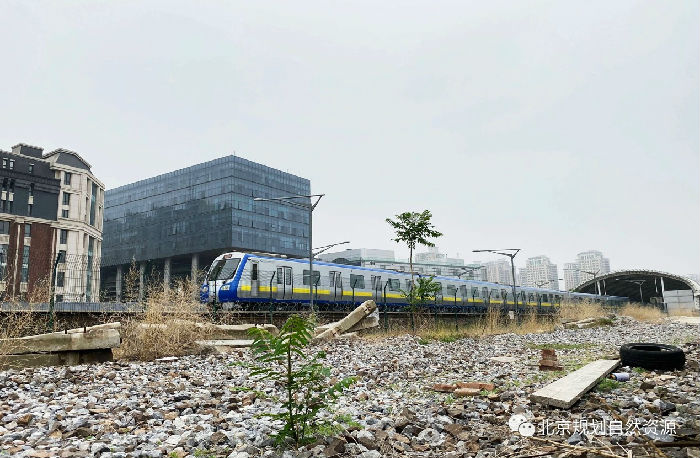
The site of Jing-Zhang Railway Heritage Park.
2.Existing challenges for the heritage park plan
The Jing-Zhang Railway Heritage Park is a linear park passing through the city and facing complex traffic organizations. The high-speed railway is under the park; the metro line 13 goes along with the park on the ground and the park has many intersections with the streets. The second challenge is that land ownership along the 9 kilometers linear park is complicated. The original ground space, which is the main space for the park, belongs to the railway department, but there are also nearly 20 universities and research institutes related to the park. The third challenge is that as a large linear space goes through different urban areas, the renewal requirement along the park is different. It is difficult to respond by one kind of renewal method or design. The construction of the heritage park needs to be carried out by multiple stages with different focuses.
3.Key concepts in making the heritage park design
Public participation in the plan
The Jing-Zhang Railway Heritage Park project has been implemented with many creations in the plan-making process. This work is not just to propose a blueprint design of the heritage park, but to follow and engage in the overall process from design to construction and management.
A special working group was established at the beginning of this project. This working group integrated all related government departments and professional plan-making teams, to bring all the neighborhood offices, universities and public social groups to take efforts together in making the heritage park design. A series of activities, such as publishing articles on social media, holding workshops, international design week and making forums, were held by the working group to encourage more people to participate in this project.

Public participation in making the Jing-Zhang Railway Heritage Park design.
Promoting the implementation of park design by pilot projects
In September 2019, a length of about 800 meters and an area of about 1.7 hectares section of the heritage park which locates between Wudaokou Chengfu Road and the North Fourth Ring Railway Bridge was implemented first as a pilot project. The practice of the Wudaokou pilot area successfully won the recognition and support of the public, and more importantly, it has provided valuable experience for the implementation of the heritage park.
An international collection of conceptual design was held and six design firms were selected from the 60 application to provide forward-thinking, creative and feasible conceptual spatial design schemes. This public collection process not only improved the design of pilot area, but also expanded social influence.
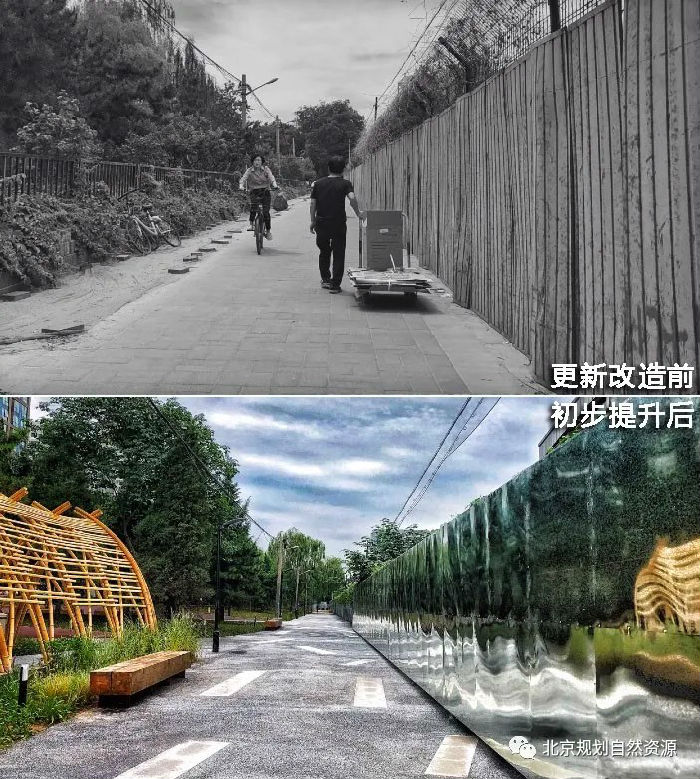
The before and after photo of Wudaokou pilot area.
Focusing on people-centered design
The Jing-Zhang Railway Heritage Park is an important urban renewal project in Beijing, and the "Centennial Jingzhang" is an important cultural heritage of China. This railway not only shortens the time and space distance between Zhangjiakou and Beijing, but also interprets the wonderful story of generations. Cultural heritage is created by people, and people are the real masters of cultural heritage. The construction of Jing-Zhang Railway Heritage Park aims to bring cultural heritage back to people's lives, so people-oriented is the key concept of designing the heritage park. The heritage park provided urban spaces with diversity, publicity and synergy, making the city better.
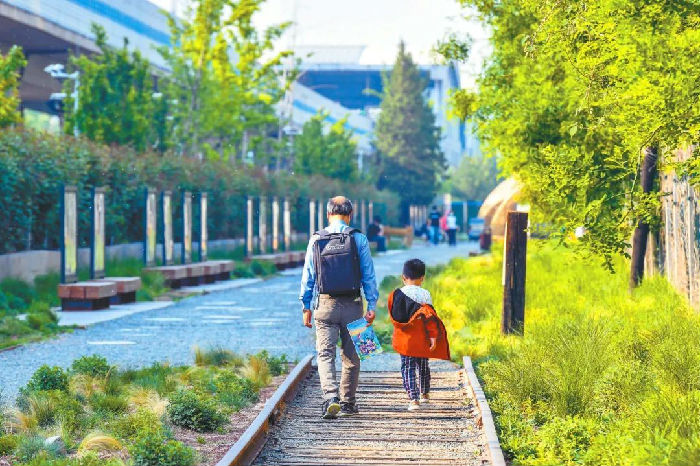
Photo of the Wudaokou section of heritage park. (source: https://www.thepaper.cn/newsDetail_forward_7553889)
4.Highlights of the heritage park
With the concepts of "cultural regeneration, public sharing, science and technology characteristics, intensive and compact, green and ecology", the heritage park design has many highlights.
Cultural regeneration - the design reserved the elements representing the history of railway, such as gantry cranes and railway tracks, to inherit history and culture.
Public sharing - the renewal project provides about 16 hectares of green space and five new streets to connect the urban areas between the railway. A "three-way and one-green" slow travel space including running tracks, walking paths and bicycle paths run through the whole line. New sports facilities such as standard football fields, futsal fields, basketball courts, extreme sports fields and many table tennis courts are built as well.
Science and technology characteristics - many universities and technology companies locate along the heritage park and the park will become a platform of science and technology publicity and education.
Intensive and compact - the vacant space under bridges is designed as a part of the park including the metro line 13 bridge and the North Fourth Ring Road bridge.
Green and ecology - the heritage park provide more green landscape and ecological corridors to the city.
Source: <https://mp.weixin.qq.com/s/7eHa6aRklCi_eMJsHJcs8w>
Edited and translated by Jia Mengyuan